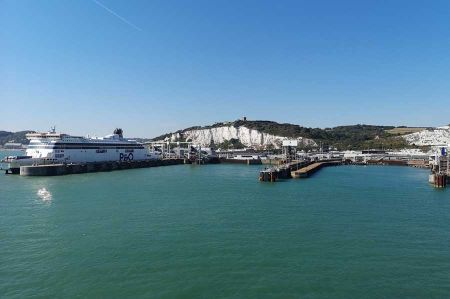Dover - the White Cliffs are symbolic and beautiful
- Written by Portal Editor
Dover White Cliffs - Who does not know them, the world-famous Cliffs of Dover, we already heard about them when we were at school.
Dover is located in the extreme south-east of England, as a port city quite important and it forms the shortest distance to the continental mainland to Calais in France. So it goes without saying that we also wanted to take the route across the Channel with our car roof tent and other camping equipment, where only 34 kilometres are measured between South Foreland, northeast of Dover, and Cap Gris-Nez near Calais. We deliberately chose the day crossing by ferry to see at least the white cliffs, better the chalk cliffs, in daylight.
Dover - Channel swimmers pass the English Channel
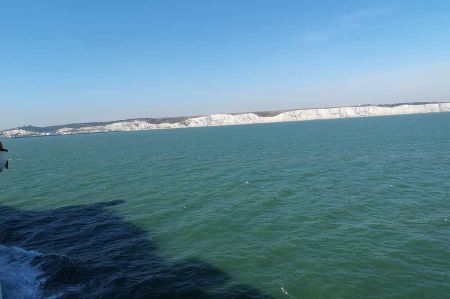 The ferry crossing was already a lovely experience, so there was a good portion of fish´n chips, then a tea on the outside deck on the way to Dover. Looking at the waves and the horizon, the thoughts suddenly reached the canal swimmers, who would like to save the ferry costs. But joking aside: you have to be convinced of yourself and also be an excellent swimmer to cross the distance across the English Channel in the changing tides, whereby the distance actually travelled is often much longer because the swimmers in the English Channel are exposed to strong currents. To make matters worse, even in summer the water temperature hardly rises above 17 ° C and the swimmers are at risk of hypothermia. Weather, wind and currents are often subject to unpredictable changes.
The ferry crossing was already a lovely experience, so there was a good portion of fish´n chips, then a tea on the outside deck on the way to Dover. Looking at the waves and the horizon, the thoughts suddenly reached the canal swimmers, who would like to save the ferry costs. But joking aside: you have to be convinced of yourself and also be an excellent swimmer to cross the distance across the English Channel in the changing tides, whereby the distance actually travelled is often much longer because the swimmers in the English Channel are exposed to strong currents. To make matters worse, even in summer the water temperature hardly rises above 17 ° C and the swimmers are at risk of hypothermia. Weather, wind and currents are often subject to unpredictable changes.
Successful channel swimmers from all over the world
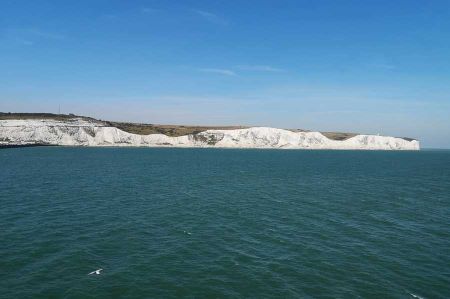 The first successful English swimmer is considered to be the English captain Matthew Webb, who in August 1875, at the age of 27, swam through the canal from Dover to Calais. Since he had miscalculated the swell and current, he covered more than 70 km and took more than 21 hours to do this. The sports swimmer, multiple world record holder and Olympic gold medallist Gertrude Ederle is the first woman to swim across the canal in the annals. In 1926, it only took 14:31 hours, almost two hours less than the men's best time to date. On September 9, 2010, the youngest swimmer at the age of 16, Lenka Štěrbová, mastered the stretch from Dover to the Cap Gris-Nez peninsula - after a start just after 3:30 a.m. in the morning at 17 ° C water temperature in just 9:22 hours. Parents and siblings had kept her happy with funny drawings that they showed from the escort boat.
The first successful English swimmer is considered to be the English captain Matthew Webb, who in August 1875, at the age of 27, swam through the canal from Dover to Calais. Since he had miscalculated the swell and current, he covered more than 70 km and took more than 21 hours to do this. The sports swimmer, multiple world record holder and Olympic gold medallist Gertrude Ederle is the first woman to swim across the canal in the annals. In 1926, it only took 14:31 hours, almost two hours less than the men's best time to date. On September 9, 2010, the youngest swimmer at the age of 16, Lenka Štěrbová, mastered the stretch from Dover to the Cap Gris-Nez peninsula - after a start just after 3:30 a.m. in the morning at 17 ° C water temperature in just 9:22 hours. Parents and siblings had kept her happy with funny drawings that they showed from the escort boat.
In addition to the solo route Dover-Calais, the double distance Dover-Calais-Dover is done too. There have also been multiple crossings. Every year more than 100 people now try to swim the English Channel solo and in a "conventional way", i.e. without crossing wetsuits and buoyancy aids, there are more and more relay teams.
Dover - The chalk cliffs had come into view
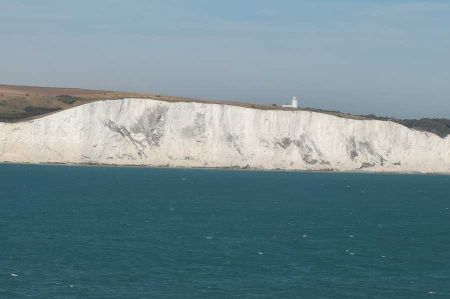 In the distance, the chalk cliffs had come into view, which also increased the number of spectators on deck. The chalk cliffs of Dover, called White Cliffs of Dover, are actually bright white cliffs that form part of the British coastline as part of the North Downs range of hills. The front of the cliffs, up to 106 meters high, owes its appearance to its composition of lime (pure white calcium carbonate), interspersed with black flint.
In the distance, the chalk cliffs had come into view, which also increased the number of spectators on deck. The chalk cliffs of Dover, called White Cliffs of Dover, are actually bright white cliffs that form part of the British coastline as part of the North Downs range of hills. The front of the cliffs, up to 106 meters high, owes its appearance to its composition of lime (pure white calcium carbonate), interspersed with black flint.
The chalk cliffs have great symbolic value for Great Britain, since they face continental Europe on the narrowest part of the English Channel, and therefore in the past they were symbolic protection against impending invasions. Since crossing the canal at Dover is the most used sea route between the mainland and the British Isles, the white line of the cliffs also offers many travellers the first or last view of the United Kingdom.
Chalk cliffs - origin and history
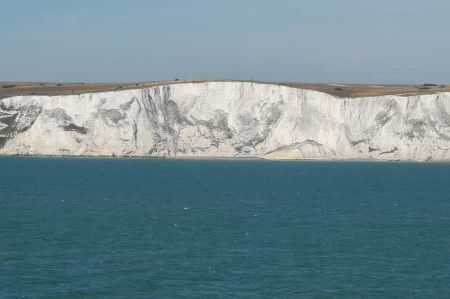 The chalk cliffs of Dover are mainly composed of coccoliths and trace their origins back to chalk some 136 million years ago, when the area between Great Britain in the west and Sweden and Poland in the east was deep in tropical waters. The skeletons of corals, sponges and other small sea creatures sank to the sea floor as sediment and began to pile up there. Up until about 70 million years ago, this process had formed a mass of silica-spotted lime that covered vast areas between Britain and the Baltic Sea - white rocks like Dover's, though smaller, can also be found on the Danish islands of Møn and Langeland or the coast of Rügen in Germany they can be found. The chalk layer was located high above sea level during the ice ages and was additionally covered by glaciers in some places. After the ice ages, they were then exposed to the rising sea. Because of the extraordinary softness of the lime, the tides have been able to erode this land mass to a significant extent, among other things, to form the English Channel.
The chalk cliffs of Dover are mainly composed of coccoliths and trace their origins back to chalk some 136 million years ago, when the area between Great Britain in the west and Sweden and Poland in the east was deep in tropical waters. The skeletons of corals, sponges and other small sea creatures sank to the sea floor as sediment and began to pile up there. Up until about 70 million years ago, this process had formed a mass of silica-spotted lime that covered vast areas between Britain and the Baltic Sea - white rocks like Dover's, though smaller, can also be found on the Danish islands of Møn and Langeland or the coast of Rügen in Germany they can be found. The chalk layer was located high above sea level during the ice ages and was additionally covered by glaciers in some places. After the ice ages, they were then exposed to the rising sea. Because of the extraordinary softness of the lime, the tides have been able to erode this land mass to a significant extent, among other things, to form the English Channel.
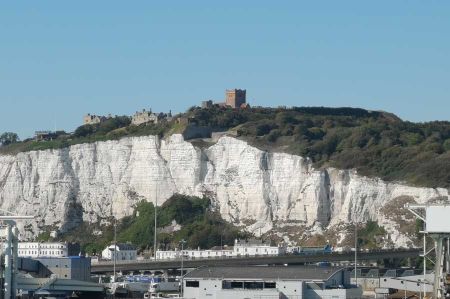 The edge of the rocks is still being eroded at Dover, about one centimetre of the rocks is lost each year, even if large chunks occasionally fall into the channel with little warning. Visitors are therefore encouraged to stay at least five meters from the edge. We were far enough away on the ferry, so we had the impressive view of the rocks until we saw the castle above the harbour. But more on that later.
The edge of the rocks is still being eroded at Dover, about one centimetre of the rocks is lost each year, even if large chunks occasionally fall into the channel with little warning. Visitors are therefore encouraged to stay at least five meters from the edge. We were far enough away on the ferry, so we had the impressive view of the rocks until we saw the castle above the harbour. But more on that later.
Please read as well:
A first visit to Norwich - it will not be the last!
Longdendale Trail - hike up to the moor heights
Biking and Hiking Longdendale Trail to Woodhead Tunnel
